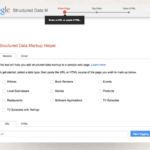So, let’s talk about Search Engine Optimization (SEO) and User Experience (UX). SEO is all about getting your website to climb the rankings in search results, while UX focuses on how visitors actually engage with your site. You could say UX is like the warm hug of the web, while SEO is more about the algorithms and Google’s whims. But are they really that different?
When it comes to building a website, many folks see SEO and UX as rivals locked in a never-ending duel. But hold up! They might just be more like frenemies than true enemies.
Understanding SEO and UX
As you might guess, SEO is all about making sure your web pages can be easily found. SEO experts need to crack the code of search engine algorithms to figure out what makes a webpage shine. This know-how leads to content that’s not only easy to find but also super useful for users.
On the flip side, UX is like your best friend who always wants you to have a great time online. It concerns how users feel when they navigate a website, mobile app, or even any other type of design. UX designers prioritize user satisfaction and the journey that users take to get things done.
The Interrelation between SEO and UX
Believe it or not, SEO and UX can collaborate to boost user engagement and improve your search engine visibility. A team-up approach to web design can help create a site that’s not just user-friendly but also search-engine friendly.
Take Apple’s website, for example. It’s a prime illustration of SEO and UX in harmony. Its sleek design and smooth interactions help users find what they’re looking for without breaking a sweat. Similarly, Semrush uses brilliant keyword strategies that enhance the visibility of its content, making information accessible and easy to digest.
Why do both SEO and UX matter for your website?
When SEO and UX join forces, your website enjoys better performance and offers users a satisfying experience. Good SEO brings visitors to your site, while great UX keeps them engaged, making their time on your site meaningful.
So What to do with UX to achieve higher SEO?
Sometimes it feels like SEO pros and UX designers are on opposite teams, especially when the need for SEO clashes with a site’s aesthetics. But fear not! You can satisfy both worlds with a few clever tweaks:
Do great things with Headers
SEO loves a clean content structure. Use one strong H1 tag and follow it up with various H2 and H3 tags sprinkled with relevant keywords. It’s a win-win for both SEO and UX!
You will love multimedia content
Embrace images, videos, and graphics, but remember to optimize them for SEO. Using JPEGs instead of other formats can beef up your SEO score while also enhancing UX. Studies show that pages with plenty of visuals (think 10+ images in a 2,000-3,000 word piece) can see higher conversion rates.
CTAs can be your savior
Calls to Action (CTAs) are like gold. They boost conversion rates and play a crucial role in both SEO and UX. An eye-catching “Discover” button can elevate user engagement, while a link leading to more relevant content will improve both on-page SEO and overall user experience.
Keep users on your page longer with strong call-to-action messages. For example, thanks to a powerful UX design, an interesting “Discover” button will serve both SEO and UX design at the same time. Or, an attractive button at the end of the content on a site that directs the user to another relevant content page will both strengthen the on-page SEO with link building and mean a perfect UX design.
Page Speed and UX Design
Page load speed is instantly related to UX design. If your site takes too long to show up, visitors will bail. Aim to keep that loading time under three seconds to keep bounce rates down and satisfaction up.
That’s how, you can get a much better understanding of how related UX design is to SEO when we consider the first three seconds to be critical to preventing bounce rate.
SEO and UX: Partners in Crime
Hopefully, it’s clear by now that SEO and UX should be the best of friends in creating a website that works for both users and search engines.
But what about you? Do you think about your users while crafting content? How do you collaborate with your design team to ensure that your site remains user-friendly, especially on mobile? What’s your secret for balancing SEO needs with UX delights? We’d love to hear your thoughts!


